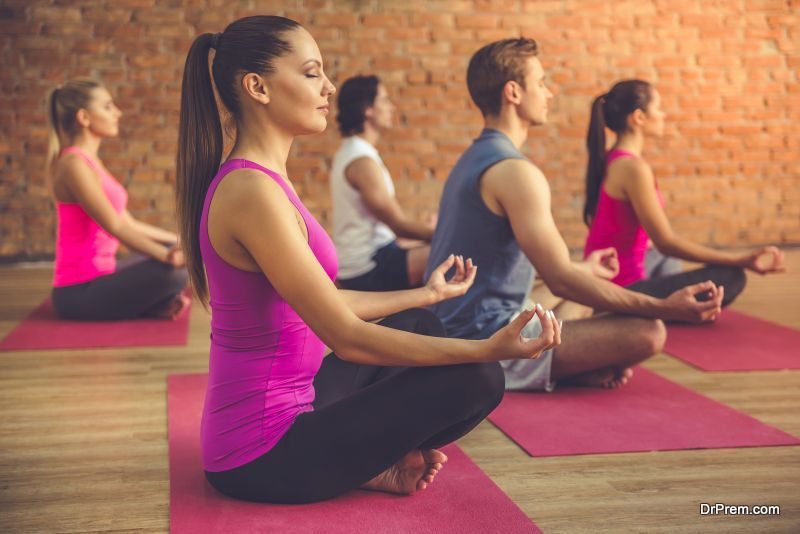Experts report that an average of 80% of Americans will experience lower back pain at one time or another. Back pain and injury are also the leading cause of missed work days for employed Americans. The good news is, with a little care and preparation; you can prevent back injuries and help reduce any pain or discomfort you’re currently feeling. Read on to learn more.
Practice Good Posture
 Maintaining proper posture can help prevent both lower back and neck pain, which is important in both the seated and standing position. Slouching your shoulders, bending your neck, and hunching over your desk are all forms of poor posture. When your shoulders slouch inward toward your chest, you’re putting strain on both your neck and back muscles. Over time, poor posture can lead to joint, muscle, and ligament complications. You can improve your posture in a variety of ways. While walking and standing, try to place most of your weight in the balls of your feet and keep your knees slightly bent. When standing, imagine pulling your shoulder blades together. This prevents slouching. Replacing your office chair with an exercise ball is another great way to engage your core and protect your lower back muscles.
Maintaining proper posture can help prevent both lower back and neck pain, which is important in both the seated and standing position. Slouching your shoulders, bending your neck, and hunching over your desk are all forms of poor posture. When your shoulders slouch inward toward your chest, you’re putting strain on both your neck and back muscles. Over time, poor posture can lead to joint, muscle, and ligament complications. You can improve your posture in a variety of ways. While walking and standing, try to place most of your weight in the balls of your feet and keep your knees slightly bent. When standing, imagine pulling your shoulder blades together. This prevents slouching. Replacing your office chair with an exercise ball is another great way to engage your core and protect your lower back muscles.
See a Chiropractor
Chiropractic care is a popular form of alternative medicine which diagnosis and and treatment of disorders related to the musculoskeletal system. Chiropractors believe that when the spine and musculoskeletal system are aligned, that the body can function properly and achieve optimum health. If you’re experiencing chronic low back pain or have recently incurred an injury, a chiropractor can help realign your spine, ease sore muscles, and locate the exact source of your problem. The chiropractor may use manual manipulation or the help of electrodes and heat stimulation. Your primary care physician can likely recommend you to a chiropractic facility like New World Chiro.
Try Yoga
 Yoga is good for both physical and mental health. Yoga improves flexibility and balance and may also help stretch the muscles in your lower back. Flexibility helps prevent injury and keep your muscles loose and malleable. Yoga may also help realign and strengthen your spine, while strengthening your muscles. If you’re ready to up your yoga game, try hot yoga. The temperature in a hot yoga studio reaches highs of 100 degrees and is said to help your muscles loosen and stretch even further and more easily. Avoid yoga class if you’re in extreme pain or recently incurred a serious injury. Save it for a time when you’re feeling stiff or sore or use it as preventative care.
Yoga is good for both physical and mental health. Yoga improves flexibility and balance and may also help stretch the muscles in your lower back. Flexibility helps prevent injury and keep your muscles loose and malleable. Yoga may also help realign and strengthen your spine, while strengthening your muscles. If you’re ready to up your yoga game, try hot yoga. The temperature in a hot yoga studio reaches highs of 100 degrees and is said to help your muscles loosen and stretch even further and more easily. Avoid yoga class if you’re in extreme pain or recently incurred a serious injury. Save it for a time when you’re feeling stiff or sore or use it as preventative care.
Don’t Stand or Sit for Too Long
Sitting or standing for extended periods of time can lead to extreme lower back pain and cause complications. Your tailbone, spine, and lower back undergo unwanted pressure when you sit for a long time. This can sometimes cause numbness and tingling in the legs and feet. That’s because, in the seated position, blood flow to the lower extremities is constricted. Try to stand up frequently and stretch at your desk. Simple stretches include touching your toes or taking a short walk around the office. While sitting for too long isn’t good for your back, neither is standing. Standing for hours on end also puts unwanted pressure on your lower back and feet. Wearing supportive shoes can help with this, but ideally, you should take a seated break every few hours to take pressure off your spine.
Because lower back pain is so common, there are many treatment plans available. But before you experience discomfort, you can try preventative methods like yoga, stretching regularly, and maintaining proper posture. When you start to feel discomfort in your back, evaluate your current lifestyle choices and see where you can make positive changes.
Article Submitted By Community Writer




